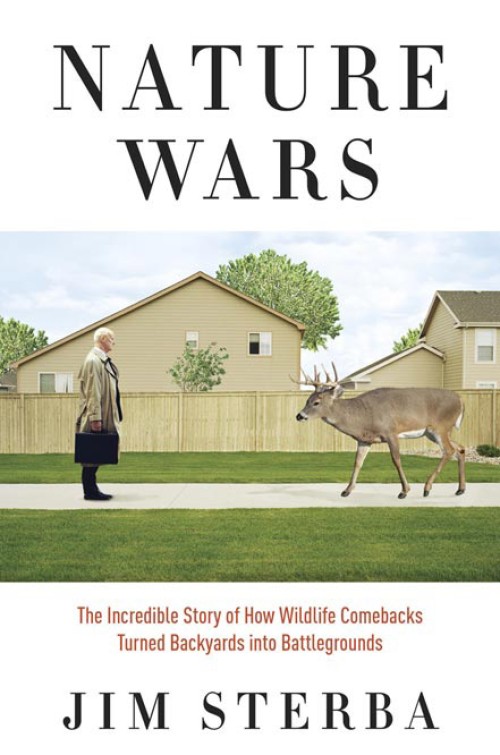by Jim Sterba
Crown, 2012
The Northeast has become a hive of ecological counter-intuition, at least by the framework of any living memory. According to Jim Sterba’s Nature Wars: The Incredible Story of How Wildlife Comebacks Turned Backyards into Battlegrounds, farm abandonment and the slow growth of trees are chief culprits, along with the more rapid wean of people from the natural world, even as they’ve ebbed from city to exurb. It’s there, where sprawl meets forest reclamation, that the generations reared believing that nature had long absconded tragically “over the horizon, or way up north,” have been forced to reconsider old assumptions.
While Sterba’s work might rightfully be lumped with the general fret of American detachment from the natural world, Nature Wars joins a recent publishing spate that urges ditching the Disneyesque ecosentiment. Such well-intended mawkishness, Sterba implies, was a natural excrescence in the wake of centuries of crippling agricultural practices and the febrile slaughter of wildlife and trees, which left a majority of the North Woods a near lifeless hay field. Sterba traces the morphology of vanished fauna into the cuddly avatars of Thumper and Teddy, and from there the yearn to prohibit any human encroachment on the land whatsoever. As a Depression-born farm kid, he watched first with amusement and then concern as sprawl dwellers have struggled to accept the wildlife reflooding a suddenly tree-giddy Northeast.
Rather than the plaintive wards of national parks and the Canadian outback, then, wildlife and trees have again become neighbors; even urbanscapes now host impressive woodlots. Sterba details how this happened, first with the trees then the animals they drew. With a journalism background, he deftly chronicles the history of forest-to-farm-to-forest, followed by twentieth-century efforts to replenish wildlife, which according to many whom Sterba interviews have passed from heartening endeavor to disastrous success. Focusing on geese, bears, beavers, deer, and turkeys, the book’s second section follows each species from pre-European contact plentitude to the collective holocaust that ensues, ending with their current status as suburban apocalyptics. Even those fluent in natural history will revel in Sterba’s telling, and likely learn a great deal in the process. The reason why many Canada geese have stopped migrating, for instance, or just how close white-tailed deer came to extinction, is fascinating. Not everyone, of course, wishes these creatures to revanish, but many people have become what Sterba coins “species partisans,” fighting with litigation and death threats the many movements to manage wildlife reasonably. As a newspaper man, he maintains a mostly objective eye on this group, but an occasional farmer’s sneer sneaks out to tip his bias.
This bias towards rational management is most prevalent in the final section, “Denatured Life,” where Sterba recounts the rise of manufacturing and displacement of farming, leading to the indoor life that creates present-day anxiety among conservationists, exploitative and protectionist alike.
Happily, he dedicates a chapter to roadkill, the clandestine berserker in modern wildlife management, which most people (biologists included) scarcely think of, only that it’s a “price of transportation, like gasoline or maintenance.” Feral cats, another rarely thought upon wildlife catastrophe, receive rough and vital treatment as well. This is an important book. Contrary to the mantras most of us have grown up with, and contrary to much of what is occurring across the globe, flora and fauna have recovered remarkably in the Northeast, reconstituting many a personal paradigm. In entertaining fashion, Sterba lays out both the frictions this has created and compelling ways to quell them.


